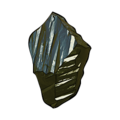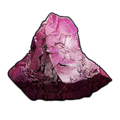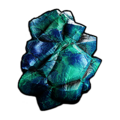Difference between revisions of "Mavka"
m |
m |
||
| Line 11: | Line 11: | ||
|pronunciation={{IPAc-en|ˈ|m|ɑː|v|.|k|a:}} | |pronunciation={{IPAc-en|ˈ|m|ɑː|v|.|k|a:}} | ||
|languageOrigin=[[wikipedia:Ukrainian_language|Ukrainian]] | |languageOrigin=[[wikipedia:Ukrainian_language|Ukrainian]] | ||
|ipaKey=[[wikipedia | |ipaKey=[[wikipedia:Ukrainian_phonology|key]] | ||
|alias=Chemosh | |alias=Chemosh | ||
|class=Moon | |class=Moon | ||
Revision as of 20:43, 30 June 2024
(Ukrainian) - IPA(key)
Mavka (/ˈmɑːv.kɑː/) is the second closest moon to Eos. It is the closest moon to Eos to also have its own subsatellite, Kupalo, and its own asteroid belt, which is thin and has a hue like faded wine. Though as bumpy and rough as any astronomical object, its surface is relatively smooth and devoid of any significant mountains, crevasses, or craters. Throughout the day, its atmosphere glows an intense yellowish green, but at sunset and sunrise, a stripe of deep blue cuts beneath it.
History
An expedition organized by Messir of the True Chemosh Cult succeeded in being the first player to reach this moon.
Expedition
At the launch of Early Access, Messir began a project codenamed 'Chemosh Voyager I' to construct a ship capable of reaching a distant moon. Reportedly, the first two beams of its frame were welded within the first hour of early access, and the ship was finished by the second day. Its construction was funded by the True Chemosh Cult company, and the journey took around three days to complete — longer than was strictly necessary, as a radiator suffered a fault which hindered the ship's generators. Nevertheless, the voyage was complete, and Messir named the moon Chemosh after the Moabite god of the same name.
Nomenclature
From Slavic mythology, a Mavka (Ukrainian: Мавка) or Nyavka (Ukrainian: Нявка) is a type of spirit associated with mountain rivers and forests, and which finds its primary origin in Central Ukrainian folklore, though it shares a basis in the Proto-Slavic navь with the Russian Rusalka. The Mavka is a vengeful spirit which represents the souls of women who have died unnatural, tragic, or premature deaths, and cast neither shadows nor reflections wherever they go. They were sometimes said to help farmers by looking after cattle and driving out wild animals, but most often they were said to appear near the edges of forests and in the mountains in order to lure unsuspecting young men to their deaths, presenting them with gifts of flowers with which they also adorned themselves.








